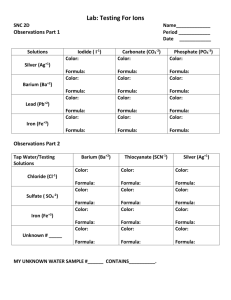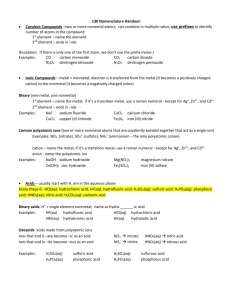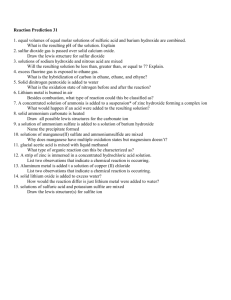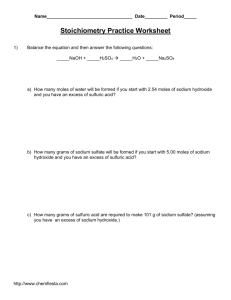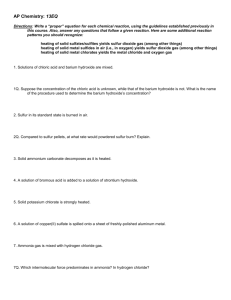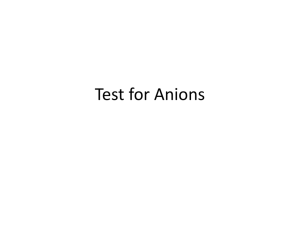Bond
advertisement
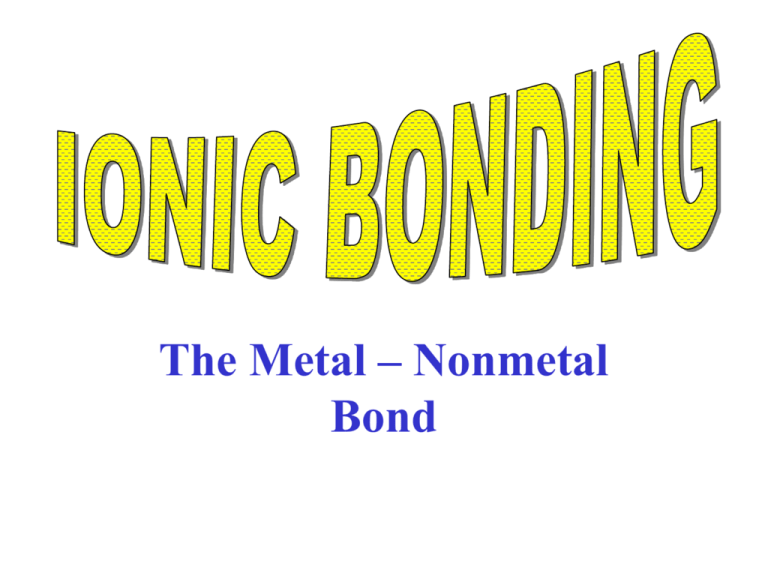
The Metal – Nonmetal Bond When a metal and nonmetal come together, a pair of electrons acts as a bond. They each become ions. The Rules: • Metal first, nonmetal second • Nonmetal ion becomes ‘ide’ • Metal is positve, nonmetal is negative • Charges must balance to zero • Formula uses a subscript to balance charges • Example: MgCl2 ; Na2O Practice: Sodium and fluorine Barium and iodine lithium and phosphorus Aluminum and oxygen Beryllium and oxygen Calcium and nitrogen Answers: Sodium and fluorine Barium and iodine lithium and phosphorus NaF BaI2 Li3P Aluminum and Beryllium and oxygen oxygen Al2O3 BeO Calcium and nitrogen Ca3N2 Solutions • When ionic compounds are put in water, they dissove into ions: Polyatomic ions: are groups of atoms bonded together with a charge. Examples: • They behave OH-1 = hydroxide just like NO3-1 = nitrate single atom PO4-3 = phosphate ions. • • • • • SO4-2 = sulfate Practice: Use polyatomic ions just like any other ion; But when you have more than one , use parentheses. • • • • barium hydroxide= Ba(OH)2 strontium nitrate= lithium phosphate potassium sulfate • Notice parentheses show multiple ions. Answers: • • • • barium hydroxide Ba(OH)2 strontium nitrate Sr(NO3)2 lithium phosphate Li3PO4 potassium sulfate K2SO4 Transition metals: Metals that have more than one possible charge: • • • • Cobalt: Co+2, Co+3 Copper: Cu+, Cu+2 Iron: Fe+2, Fe+3 Lead: Pb+2, Pb+4 • When writing the names, always use roman numerals to show the charge. Examples: • • • • Cobalt (II) Co+2, Cobalt (III) Co+3 Copper(I), Cu+, or Copper (II), Cu+2 Iron(II) Fe+2, or iron (III), Fe+3 Lead(II), Pb+2, or lead (IV), Pb+4 • Each of these behaves completely different than the others!!! Show the numbers! Practice! Lead (IV) hydroxide Copper (II) nitrate CoPO4 Fe2(SO4)3 Answers: • Lead(IV) hydroxide Pb(OH)4 • Copper(II) nitrate Cu(NO3)2 • Cobalt (III) phosphate CoPO4 • Iron (III) sulfate Fe2(SO4)3


